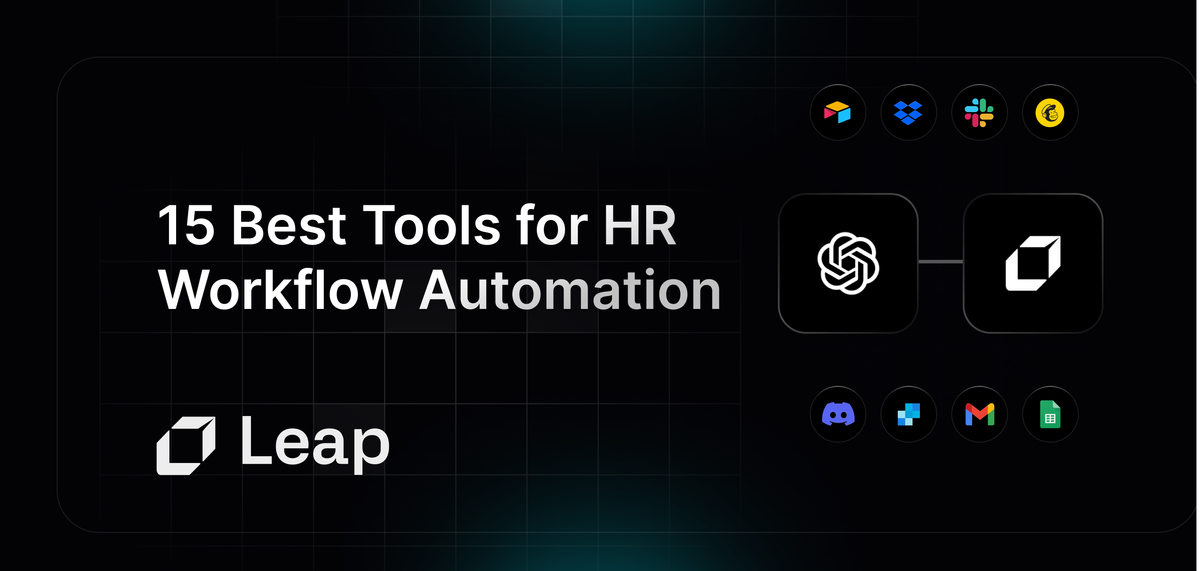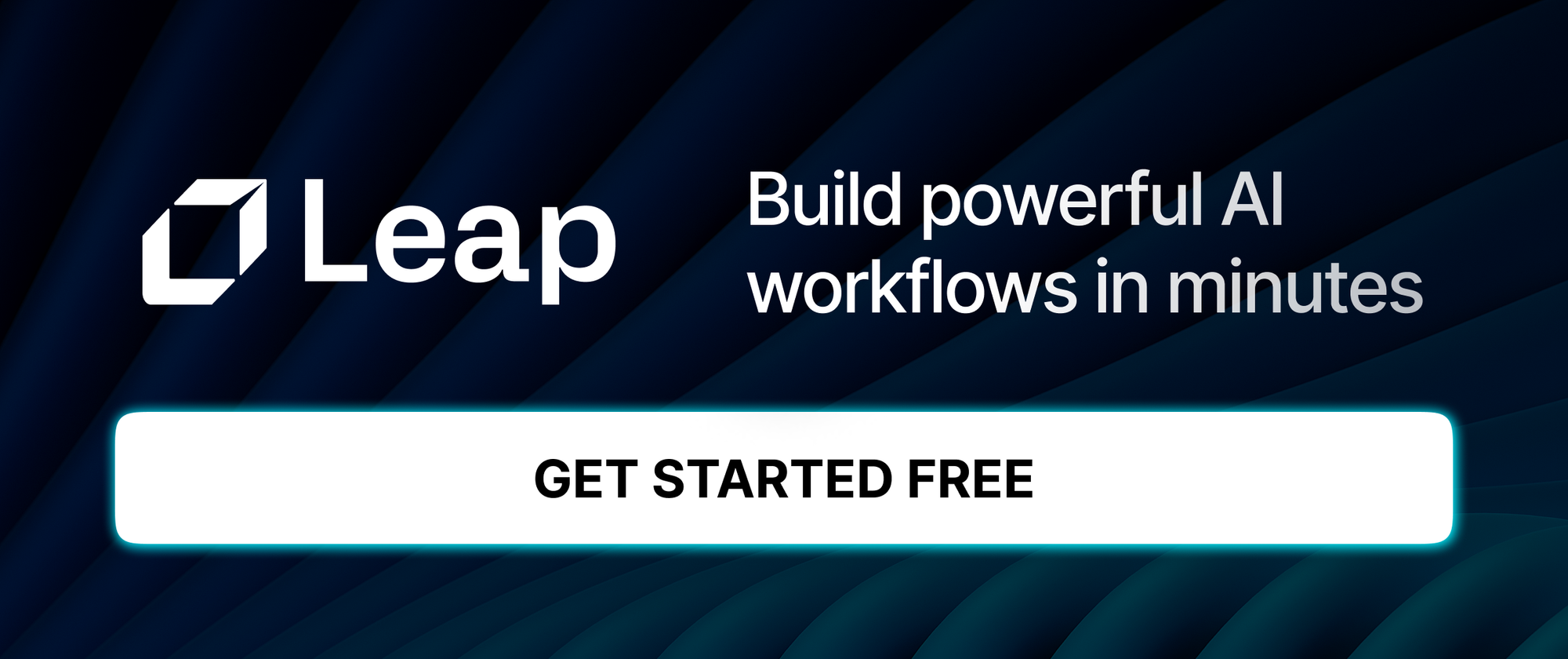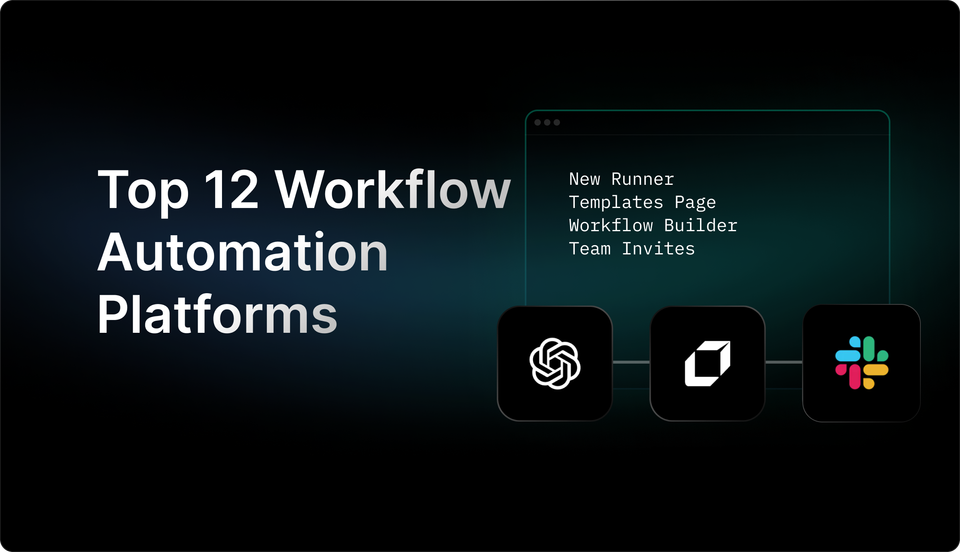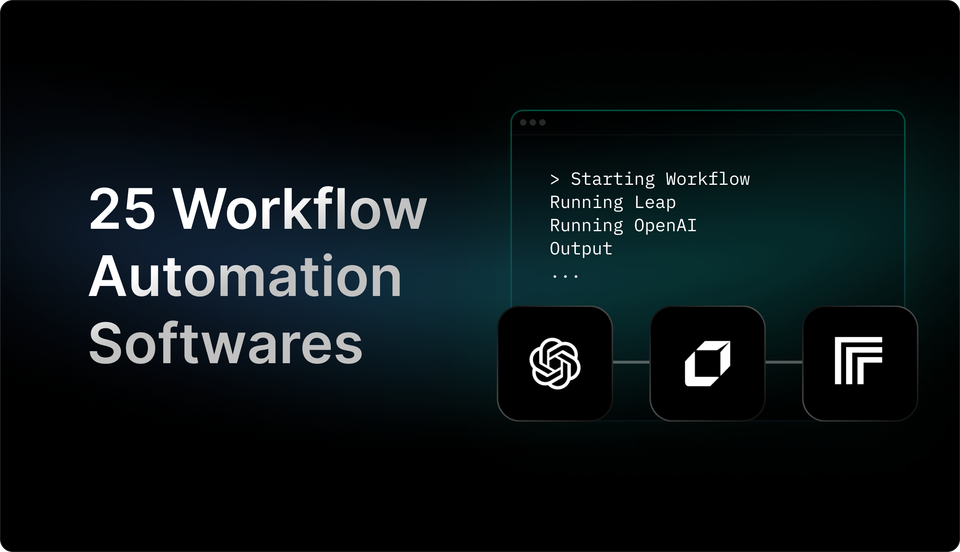15 Best Tools for HR Workflow Automation In 2024
Effortless HR management! Optimize efficiency with powerful HR workflow automation. Streamline processes for a seamless and productive workplace.

Discover the power of HR Workflow Automation in streamlining your company's processes. From simplifying recruitment tasks to enhancing employee onboarding, Workflow Automation revolutionizes HR operations. By automating repetitive tasks, increasing efficiency, and reducing errors, Workflow Automation optimizes your HR workflow for maximum productivity. Dive into the world of HR Workflow Automation and unlock the potential for smoother, more effective HR management.

What Is HR Workflow Automation?

HR Workflow Automation involves the use of technology to streamline and automate HR processes within an organization. By leveraging automation tools and software, repetitive and time-consuming tasks such as employee onboarding, leave requests, performance reviews, and payroll processing can be efficiently managed, freeing up HR teams to focus on more strategic initiatives.
How HR Workflow Automation Benefits Organizations
Implementing HR Workflow Automation can lead to increased efficiency, accuracy, and compliance within HR departments. By automating routine tasks, organizations can reduce human error, minimize manual intervention, and ensure consistent adherence to company policies and regulations. Automation can enhance employee satisfaction by providing a seamless and user-friendly experience throughout various HR processes.
The Role of AI in HR Workflow Automation
Artificial Intelligence (AI) plays a pivotal role in enhancing HR Workflow Automation by enabling intelligent decision-making, predictive analytics, and personalized employee experiences. AI-powered tools can analyze large amounts of data to identify trends, predict future outcomes, and suggest optimized HR strategies. AI chatbots and virtual assistants can provide instant support to employees, improving communication and engagement within the organization.
Leveraging AI Workflows for HR Automation
Leap helps you to automate your work with the power of AI. Partnered with Zapier, Vercel, and more, Leap enables you to supercharge your work by allowing you to create custom AI automations. Create sophisticated AI automations with no-code. Connect the tools you love with best-in-class AI text, image, and audio models.
Supercharge your existing tools with seamless AI integrations to OpenAI, Microsoft, and more. From summarizing documents, to voice translation, to AI call transcription, to AI avatar and asset generation, to SEO automation, automate anything with Leap Workflows. The opportunities for automation are endless with Leap workflows.
Try Leap’s AI Workflows tool for free today.

Related Reading
Benefits of Implementing HR Workflow Automation

HR Workflow Automation offers numerous benefits for businesses looking to streamline their processes and increase efficiency. By implementing HR Workflow Automation, businesses can experience the following advantages:
1. Time-Saving
Automation of repetitive HR tasks such as onboarding, offboarding, and leave requests can save valuable time for HR professionals, allowing them to focus on more strategic initiatives.
2. Increased Accuracy
Automation reduces the likelihood of human errors in data entry and processing, leading to more accurate HR records and compliance with regulations.
3. Enhanced Compliance
HR Workflow Automation ensures that processes are consistently applied according to company policies and regulatory requirements, reducing the risk of non-compliance.
4. Improved Employee Experience
Automation of HR processes can lead to faster response times, better communication, and a more seamless experience for employees, ultimately boosting engagement and satisfaction.
5. Cost Efficiency
By reducing manual tasks and streamlining processes, HR Workflow Automation can result in cost savings for the organization in terms of time and resources.
6. Data-driven Decision Making
Automation allows for real-time tracking and reporting of HR metrics and analytics, providing valuable insights for informed decision-making and strategic planning.
7. Scalability
As businesses grow, HR Workflow Automation can easily scale to accommodate increased workload and complexity without requiring significant manual intervention.
8. Workforce Productivity
With automated workflows handling routine tasks, employees can focus on higher-value activities that contribute to the overall productivity of the organization.
9. Streamlined Communication
Automation tools can facilitate seamless communication between HR, managers, and employees, ensuring timely updates and notifications regarding HR processes.
10. Adaptability
HR Workflow Automation platforms often offer customization options that allow businesses to adapt workflows to their specific needs, creating a tailored solution that fits their unique requirements.
Take your HR automation to the next level with Leap’s AI Workflows
Leap helps you to automate your work with the power of AI. Partnered with Zapier, Vercel, and more, Leap enables you to supercharge your work by allowing you to create custom AI automations. Create sophisticated AI automations with no-code. Connect the tools you love with best-in-class AI text, image, and audio models.
Supercharge your existing tools with seamless AI integrations to OpenAI, Microsoft, and more. From summarizing documents, to voice translation, to AI call transcription, to AI avatar and asset generation, to SEO automation, automate anything with Leap Workflows. The opportunities for automation are endless with Leap workflows.
Try Leap’s AI Workflows tool for free today.
Related Reading
- Accounts Payable Workflow Automation
- Business Automation Workflow
- Crm Workflow Automation
- Document Workflow Automation
- Education Workflow Automation
- Email Workflow Automation
- Enterprise Workflow Automation
- Intelligent Workflow Automation
- Marketing Automation Workflow Examples
- Legal Workflow Automation
- Workflow Automation Vs Rpa
- Small Business Workflow Automation
- Workflow Process Automation
- Ai Workflow Automation
15 Best Tools for HR Workflow Automation In 2024

1. Leap AI: Best Overall HR Workflow Automation Tool
Leap helps you to automate your work with the power of AI. Partnered with Zapier, Vercel, and more, Leap enables you to supercharge your work by allowing you to create custom AI automations. Create sophisticated AI automations with no-code. Connect the tools you love with best-in-class AI text, image, and audio models.
Supercharge your existing tools with seamless AI integrations to OpenAI, Microsoft, and more. From summarizing documents, to voice translation, to AI call transcription, to AI avatar and asset generation, to SEO automation, automate anything with Leap Workflows. The opportunities for automation are endless with Leap workflows.
Try Leap’s AI Workflows tool for free today.
2. IBM Watson and IBM Business Automation Workflow: Best for Automating Complex Processes
IBM Watson offers AI as a service through its Watsonx platform, designed for businesses. This platform comprises next-generation AI technologies and a set of AI assistants, like watsonx.ai, powered by generative AI capabilities. IBM Business Automation Workflow helps you automate your digital workflows to increase productivity, efficiency and insights — on premises or on cloud.
3. AWS AI Services: Best for Features and Global Presence
AWS offers a comprehensive suite of AI services, facilitating various applications and workflows: Computer Vision, Automated Data Extraction and Analysis, Language AI, Improving Customer Experience, Business Metrics, and Code and DevOps.
4. Microsoft Azure AI: Best for Developers and Data Scientists
Azure's cloud-based AI services enable developers to integrate cognitive intelligence into applications. Offerings include document intelligence for extracting text, key-value pairs, tables, and structures from documents.
5. Google Cloud AI: Best for Data Analytics
A fast, scalable, and user-friendly AI offering that includes AI Platform, video and image analysis, speech recognition, and multi-language processing.
6. ServiceNow: Best for Workflow Automation
ServiceNow offers AI capabilities through its Now Intelligence platform, allowing users to automate workflows, enhance experiences, and leverage intelligence from a unified platform.
7. Salesforce Einstein AI: Best for Marketing Teams
Salesforce Einstein is an AI layer within the Lightning Platform, providing powerful AI technologies integrated into various Salesforce solutions.
8. Alibaba Cloud: Best for Affordability
Alibaba Cloud offers AI as a service through its comprehensive suite of cloud-native data intelligence services. These services aim to enhance business agility, providing secure and reliable solutions with out-of-the-box features.
9. MonkeyLearn: Best for Text Analysis
MonkeyLearn is an AI as a Service (AIaaS) provider, offering ready-made AI solutions. It specializes in text analytics, allowing users to clean, label, and visualize customer feedback with its cutting-edge artificial intelligence technology.
10. DataRobot: Best for Building Custom Models
DataRobot provides an AI platform that is open, flexible, and adaptable to diverse AI needs. The platform integrates generative and predictive workflows, offering a unified solution for enterprises.
11. H2O.ai: Best for Analytics and Predictions
H2O.ai is a leading AI cloud company focused on democratizing AI. They offer the H2O AI Hybrid Cloud platform, enabling rapid AI model development and deployment.
12. Oracle Cloud Infrastructure (OCI): Best for Anomaly Detection
Oracle Cloud Infrastructure (OCI) offers AI as a Service through its AI Services platform. This collection includes prebuilt machine learning models, such as OCI Generative AI, designed to enhance various business processes. The Generative AI service, accessible via API, integrates versatile language models seamlessly.
13. OpenAI: Best for Versatility
OpenAI provides an API for accessing advanced language models, allowing developers to integrate powerful AI capabilities into their applications.
14. Clarifai: Best for Advanced Work
Clarifai is a leading full-stack AI and computer vision production platform, specializing in unstructured image, video, text, and audio data modeling.
15. RapidMiner: Best for Beginners
RapidMiner AI Hub serves as a collaborative platform, enhancing RapidMiner Studio functionalities. It facilitates shared repositories for models, processes, batch jobs, scheduling, and project management.
Tips On Implementing HR Workflow Automation

1. Identify Pain Points and Goals
Before implementing HR workflow automation, pinpoint the specific pain points within your HR processes that automation can address. Whether it's streamlining recruitment, onboarding, performance evaluations, or employee offboarding, understanding your goals is crucial.
2. Map Out Workflows
Visualize your current HR processes and identify where automation can be integrated. Map out workflows from start to finish, including triggers, actions, and outcomes. This will help streamline the automation implementation process.
3. Choose the Right HR Workflow Automation Tool
Select a comprehensive HR workflow automation tool that aligns with your business needs. Look for features like customizable workflows, integration capabilities with existing HR systems, reporting and analytics, and ease of use for both HR professionals and employees.
4. Collaborate with HR and IT Teams
Ensure close collaboration between your HR and IT teams throughout the automation implementation. HR professionals can provide insights into process requirements, while IT teams can handle the technical aspects of integration and deployment.
5. Train Employees
Offer comprehensive training to employees on how to use the new HR workflow automation tool effectively. Provide resources, tutorials, and support to ensure a smooth transition and adoption of the automated processes.
6. Test and Optimize
Conduct thorough testing of the automated workflows before full implementation. Gather feedback from users and make necessary adjustments to optimize the workflows for efficiency and effectiveness.
7. Monitor Performance
Track key performance indicators (KPIs) related to HR processes post-automation implementation. Monitor metrics such as time saved, error reduction, cost efficiency, and employee satisfaction to measure the impact of automation on your HR operations.
8. Continuously Improve
Embrace a culture of continuous improvement by seeking feedback, analyzing data, and identifying areas for further automation enhancement. Regularly review and update your automated workflows to ensure they remain efficient and aligned with your business objectives.
Leap AI's No-Code Automation for Seamless Integration and Productivity Boost
Leap helps you to automate your work with the power of AI. Partnered with Zapier, Vercel, and more, Leap enables you to supercharge your work by allowing you to create custom AI automations. Create sophisticated AI automations with no-code. Connect the tools you love with best-in-class AI text, image, and audio models.
Supercharge your existing tools with seamless AI integrations to OpenAI, Microsoft, and more. From summarizing documents, to voice translation, to AI call transcription, to AI avatar and asset generation, to SEO automation, automate anything with Leap Workflows. The opportunities for automation are endless with Leap workflows.
Try Leap’s AI Workflows tool for free today.
Create Game Changing Automations Today With Leap’s AI Workflows
In Human Resources, efficiency and accuracy are paramount. HR professionals are constantly juggling multiple tasks, from onboarding new employees to managing payroll and benefits. This is where HR workflow automation steps in to streamline and optimize these processes.
By leveraging AI-powered tools like Leap Workflows, HR teams can automate routine tasks such as resume screening, interview scheduling, and employee feedback collection. This not only saves time but also reduces the risk of errors, ensuring a more consistent and compliant HR operation.
Enhancing Employee Experience through Automation
Employee experience is a critical factor in the success of any organization. By automating HR workflows, companies can create a more seamless and personalized experience for their employees.
For instance, using Leap Workflows, HR departments can automate the onboarding process by sending personalized welcome emails, setting up training schedules, and collecting necessary documentation. This not only accelerates the onboarding process but also enhances employee satisfaction and engagement from day one.
Boosting Productivity with AI-Powered Tools
One of the key benefits of HR workflow automation is the significant boost in productivity it offers. By automating repetitive and time-consuming tasks, HR professionals can focus on more strategic initiatives that drive business growth.
Leap Workflows, with its AI text, image, and audio models, empowers HR teams to create custom automations tailored to their specific needs. From summarizing documents to generating AI avatars for employee training materials, the possibilities are endless with Leap's seamless integrations to tools like Zapier and Vercel.
Ensuring Compliance and Data Security
Compliance and data security are top priorities for HR departments, especially when dealing with sensitive employee information. With Leap Workflows, HR professionals can automate compliance checks, data encryption, and secure document storage to ensure the confidentiality and integrity of employee data.
By creating AI automations for tasks like GDPR compliance monitoring or confidential file handling, HR teams can mitigate risks and maintain trust with employees.
Driving Innovation and Agility in HR Operations
In a competitive business landscape, innovation and agility are key differentiators for organizations. HR workflow automation not only streamlines processes but also fosters a culture of innovation within HR departments.
By utilizing Leap Workflows to experiment with AI call transcription, voice translation, or SEO automation, HR teams can stay ahead of the curve and adapt to changing market demands. With the power of AI at their fingertips, HR professionals can drive continuous improvement and innovation in their HR operations.
Related Reading
- Best Workflow Automation Software
- Low Code Workflow Automation
- Legal Workflow Automation Software
- Clickup Alternatives
- Hubspot Workflow
- Pipedream Alternatives
- No Code Workflow Automation Platform
- Jira Automation
- Pipedrive Alternatives
- Sharepoint Workflow Automation
- Pipedrive Workflow Automation Examples
- Workflow Automation Software
- Workflow Automation Platform
- Zapier Alternatives
- Workflow Automation Tools




